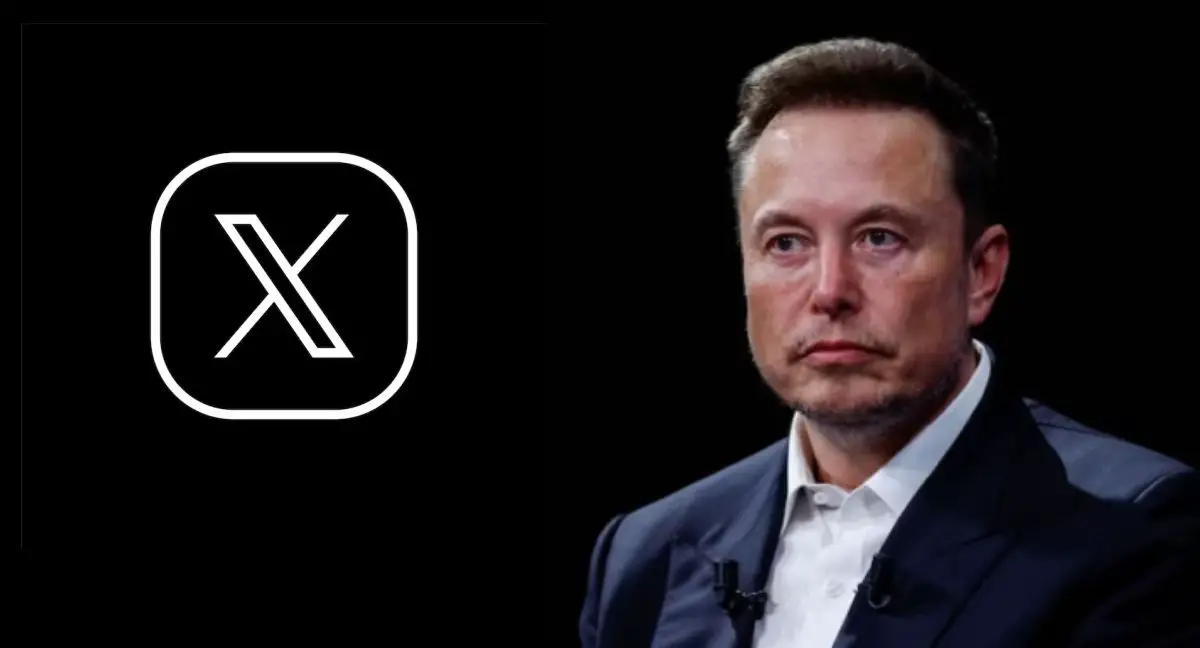Elon Musk’s transformation of X—formerly known as Twitter—is rapidly gaining momentum as the company officially begins its foray into financial services. With the introduction of in-app trading and a digital wallet under the brand “X Money,” Musk’s long-standing vision of creating an “everything app” is transitioning from aspiration to reality.
As confirmed by X CEO Linda Yaccarino in an interview with the Financial Times, the company will soon roll out services that will allow users to invest, trade, and manage finances—directly within the social media platform. This financial leap positions X not just as a content-sharing network but as a disruptive player in the fintech space, potentially rivaling platforms like PayPal, Venmo, and Cash App.
📈 From Social Media Giant to Financial Powerhouse
When Elon Musk acquired Twitter in October 2022 for $44 billion, few imagined how radically he would reshape the company. By renaming it “X” and introducing new features such as AI chatbot Grok, video/audio calling, and e-commerce tools, Musk has steadily expanded its capabilities. But financial integration represents perhaps the most significant—and ambitious—step in this evolution.
The inspiration for this move comes from China’s WeChat, a super app that combines messaging, payments, and shopping into a single platform used by over a billion people. Musk has made no secret of his desire to build a similar ecosystem in the West, and X Money is central to that goal.
💳 Introducing X Money: A Digital Wallet Built for Scale
X Money, officially introduced in January 2025, is not just another peer-to-peer payment app. It’s designed as a full-fledged digital wallet offering:
- Real-time peer-to-peer transfers
- Instant wallet funding using debit cards
- Bank account integration for easy transfers in and out
- Powered by Visa Direct in the U.S.
- Backed by strong banking partnerships, including Citibank, Stripe, and Adyen
As of June 2025, X holds money transmitter licenses in over 40 U.S. states, showing a serious commitment to navigating the complex regulatory terrain of fintech. With these licenses and growing infrastructure, X is now ready to go beyond payments into the realm of investments and digital banking.
📊 In-App Trading and Investing: The Next Big Leap
During her recent interview, Linda Yaccarino confirmed that X is preparing to introduce investment and trading functionalities directly within the app. While exact details remain under wraps, industry insiders suggest it could include:
- Stock trading
- Crypto investments
- Real-time asset tracking
- Integration with financial news and analytics
Given X’s existing support for Bitcoin tipping via the Lightning Network and cryptocurrency data display through $Cashtags, it’s plausible that crypto will be among the first asset classes supported.
There are also hints that a branded X debit or credit card could be launched before the end of 2025, further embedding financial tools into the user experience and increasing user retention.
💰 Why X Is Entering Fintech: A Strategic Pivot
Since Musk’s takeover, X has been under financial pressure. Advertising revenue dropped sharply in the aftermath of brand safety concerns and content moderation controversies. Although Yaccarino reports that 96% of advertisers have returned, X’s 2025 revenue forecast sits at $2.3 billion—still significantly lower than its 2021 peak of $4.1 billion.
By moving into financial services, X can create new revenue streams, such as:
- Transaction fees
- Premium financial services
- Affiliate earnings from trading platforms
- Interchange fees from credit/debit card usage
These services also increase time spent on the platform, potentially making users more engaged and less likely to leave for competing apps.
🏛️ The Regulatory Roadblocks Ahead
While the opportunity is enormous, the challenges are equally significant. Entering the U.S. financial sector requires X to comply with:
- Anti-money laundering (AML) laws
- Know Your Customer (KYC) regulations
- Consumer protection standards
- Federal and state financial regulations
With licenses already secured in over 40 states, X is ahead of the curve. However, nationwide rollout still depends on approval from remaining jurisdictions and federal regulators.
Additionally, X must be prepared to face increased scrutiny from financial watchdogs who are wary of tech companies entering banking and investment services—especially those that, like X, already face criticism for content moderation policies.
🏦 Tough Competition in an Established Market
X’s move into fintech places it in direct competition with well-established digital payment services:
- PayPal and Venmo (mass adoption, strong trust)
- Zelle (bank-backed and integrated)
- Cash App (already supports Bitcoin and stock trading)
- Apple Pay and Google Pay (embedded into smartphones)
Analysts are divided. Some believe X’s massive user base and integrated social features could accelerate adoption of X Money. Others question whether users will trust a formerly social-first platform with their financial data.
“Social media can drive traffic to fintech, but turning engagement into trust and financial transactions is a different challenge altogether,” says fintech analyst Robert Menendez from Gartner.
🌍 A Global Vision Still in the Making
While X Money and trading services are rolling out in the United States first, the global roadmap remains vague. However, Musk has hinted that X will explore international launches, focusing first on countries with digital-first user bases and favorable financial regulations.
Given Musk’s past success with Tesla’s global expansion and SpaceX’s international partnerships, it wouldn’t be surprising to see X target high-growth regions such as:
- India
- Southeast Asia
- Latin America
- Europe (via EU passporting options)
🧠 Musk’s Long-Term Play: Rewriting the Rules of the Internet
Musk’s fintech ambitions aren’t a recent pivot. In fact, his 1999 startup X.com, which later became PayPal, was one of the earliest attempts at online banking and digital payments.
Now, with X 2.0, Musk seems determined to complete the mission he started over two decades ago: to create a borderless, all-in-one financial ecosystem integrated into everyday digital life.
If successful, X could represent the next major evolution of how we manage money—right inside the same app we use to chat, shop, stream, and connect.
📢 What Users Can Expect Next
According to Yaccarino, 2025 will be a watershed year for X’s financial ambitions. Here’s what users may soon see on the app:
- 👛 X Wallet dashboard for managing funds
- 📈 Built-in trading interface for stocks and crypto
- 💳 X-branded Visa card for purchases and ATM withdrawals
- 🛍️ Financial tools integrated with shopping features
- 🔔 Real-time alerts for portfolio changes and spending insights
- 🛡️ Enhanced security protocols like MFA and biometrics
Early beta testers report a seamless integration, with real-time money transfers and intuitive UI design modeled after best practices in fintech.
📊 Market Reactions and Investor Interest
Following the announcement, several investment analysts raised their expectations for X’s future earnings. Venture capital interest in social-financial hybrids has surged, with some calling X’s pivot a “category-defining innovation.”
Title Page Separator Aitechtonic
Slug
Meta descriptionUse AIInsert variable
SEO analysisEnter a focus keyphrase to calculate the SEO score
Premium SEO analysisPremiumAdd related keyphrasePremiumTrack SEO performanceInternal linking suggestionsPremium
Cornerstone content
Advanced
Insights
Table of Contents
Move upMove downToggle panel: Table of Contents
| Disable the automatic insertion of the table of contents. | |
| Header Label | Eg: Contents, Table of Contents, Page Contents |
| Position | Select Position Before first heading (default) After first heading After first paragraph After paragraph number After Image number Top Bottom Choose where where you want to display the table of contents. |
| Appearance: | NOTE:Using the appearance options below will override the global Appearance settings. |
| Device Target | Select Mobile Desktop |
| Alignment | None (Default) Left Right Center |
| Advanced: | NOTE:Using the advanced options below will override the global advanced settings. |
| Headings: | Heading 1 (h1) Heading 2 (h2) Heading 3 (h3) Heading 4 (h4) Heading 5 (h5) Heading 6 (h6) Select the heading to consider when generating the table of contents. Deselecting a heading will exclude it. |
| Initial View | Initially hide the table of contents. |
| Hide Counter | Do not show counters for the table of contents. |
| Alternate Headings | Specify alternate table of contents header string. Add the header to be replaced and the alternate header on a single line separated with a pipe <code>|</code>. Put each additional original and alternate header on its own line. |
Examples:Level [1.1]|Alternate TOC Header Replaces Level [1.1] in the table of contents with Alternate TOC Header.Note:This is case sensitive. | |
| Exclude Headings | Specify headings to be excluded from appearing in the table of contents. Separate multiple headings with a pipe <code>|</code>. Use an asterisk <code>*</code> as a wildcard to match other text. |
Examples:Fruit*Ignore headings starting with “Fruit”.*Fruit Diet*Ignore headings with “Fruit Diet” somewhere in the heading.Apple Tree|Oranges|Yellow BananasIgnore headings that are exactly “Apple Tree”, “Oranges” or “Yellow Bananas”.Note: This is not case sensitive. |
Use up and down arrow keys to resize the meta box panel.
However, skeptics remain cautious. “Execution is everything,” said Clara Schmidt, a senior partner at McKinsey. “The idea is powerful, but failure to win trust could undo years of progress.”
🔚 Conclusion: From Tweets to Transactions
X’s push into trading, payments, and digital banking could redefine the app’s role in users’ daily lives. What began as a microblogging platform now aims to become a one-stop hub for communication, entertainment, shopping, and finance.
By launching X Money, in-app trading, and possibly a branded card, Elon Musk is betting big on a future where people don’t just scroll on social apps—but manage their entire financial life within them.
Of course, regulatory hurdles, stiff competition, and user trust will ultimately determine how successful this transition is. But one thing is certain: the race to build the West’s first true super app is no longer hypothetical—and X is sprinting toward the finish line.
Read Also:

